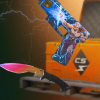One of the main reasons for Counter-Strike: Global Offensive being worldwide-known and successful was skins. Valve re-invented a way to emphasize individuality and gain new emotions while playing. And also, surely, to make money. Moreover, people can earn money on skins, too, by exchanging or selling them. In Counter-Strike 2, all skins began to look even cooler with the updated enigne. So, today CS.MONEY Blog tells what skin trading is, how it works in CS2, which rules control the market, and what are Valve’s main trading rules.
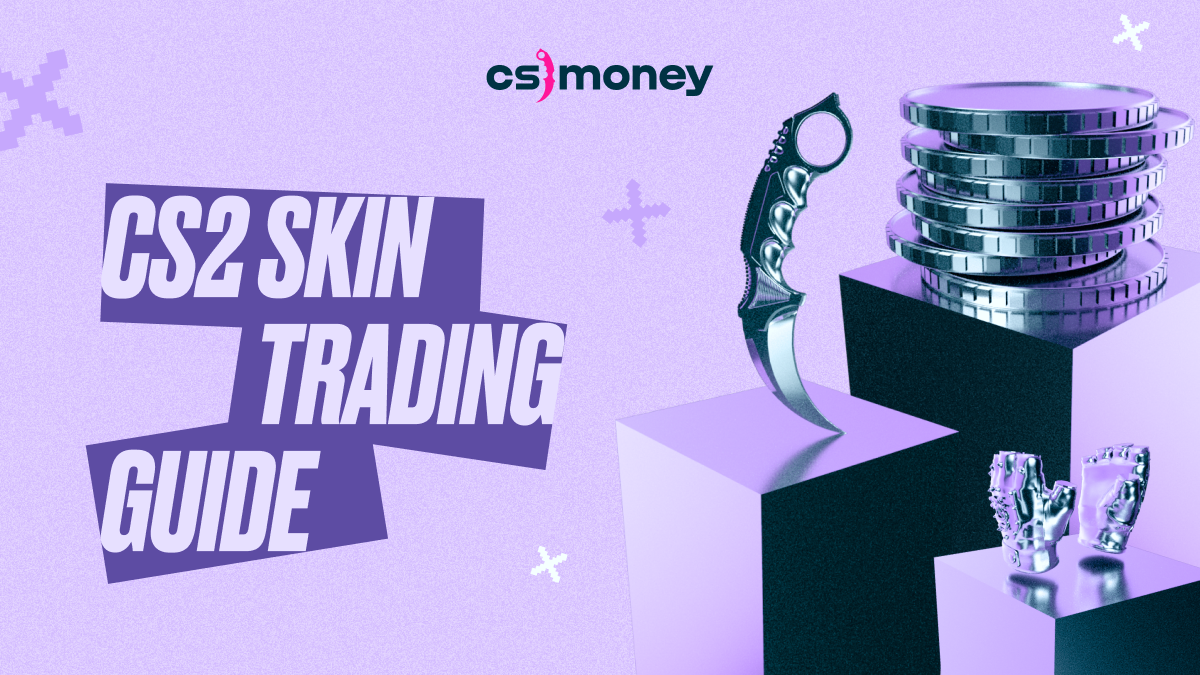
By the way, you can easily buy any skins on CS.MONEY using cryptocurrency! You don’t have to open Steam, just go here: Buy Skins For Crypto. Every single skin, just find what you want and go for it!
What are skins in CS2?
Basically, CS2 skins are purely cosmetic items. They won’t change a weapon’s functionality or firepower in any way, moreover, they’re not bright enough to become beacons if you’re hiding in the shadows. Skins only change the looks and that’s all. Also, skins have varying degrees of rarity, which affects their cost. The most common skins are worth just mere cents, while the rarest ones could be around tens of thousands of dollars.
You can learn more about skins in our ultimate guides on various topics by clicking the pics below.
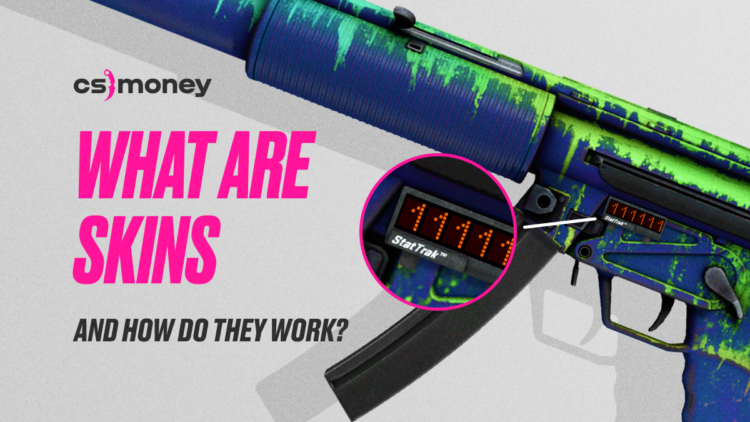
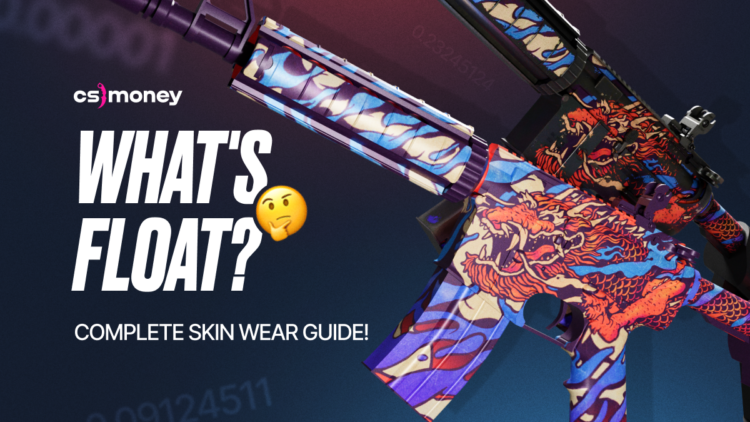
What is Trade in CS2? How to trade in CS2?
Unlike many other games, most items in Counter-Strike 2 don’t tie to your account. Each player has an inventory with skins stored, and they can be exchanged with other people. So Trading Skins in CS2 is the process of buying, selling or exchanging skins with other people.
People can exchange skins either with a simple direct transaction on Steam, buy or sell skins on Steam Marketplace, or use third-party platforms, like CS.MONEY. Why use such platform? For example, ay CS.MONEY players can buy, sell or trade CS2 skins with prices frequently lower than Steam Marketplace, with dozens of Sales and Events, handy filters, etc. Moreover, for example, unlike Steam, at CS.MONEY Market you can sell your skins and then withdraw cash to your credit card.
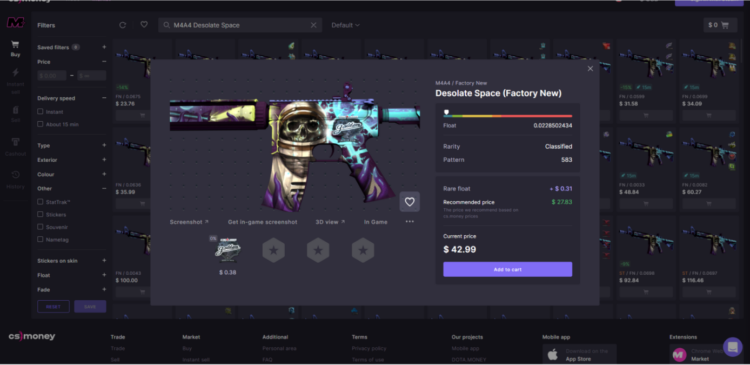
CS2 Skins Market works in the same way as any traditional market. Skin prices fluctuate depending on supply and demand, also rarity (Covert, Restricted, Consumer Grade, etc.) and conditions aka Float (Factory New, Well-Worn, Field-Tested, etc.). Surely, don’t overlook another huge factor that determines any skin’s cost: the Community. Popular weapons mean expensive skins.
Who regulates and controls the CS2 skin market?
Obviously, Valve, the developer of CS2 and CS:GO, is the main skins market regulator. Valve introduced skins in 2013 and has been running the market through Steam ever since. They monitor skins distribution and release new systems and cases. Valve also profits from each transaction made on Steam Market. Every purchase or sale on Steam is accompanied by a commission (e.g., if you sell a skin for $0.03, you will get only $0.01 to your wallet).
However, the skin trading ecosystem extends beyond Steam. Nowadays, exchange and trading of skins is possible on various third-party platforms, for example CS.MONEY, which operates independently. Most platforms use Steam features and rules to provide healthy and rich trading ecosystems. Though, third-party websites may apply additional rules for exchanges and sales.
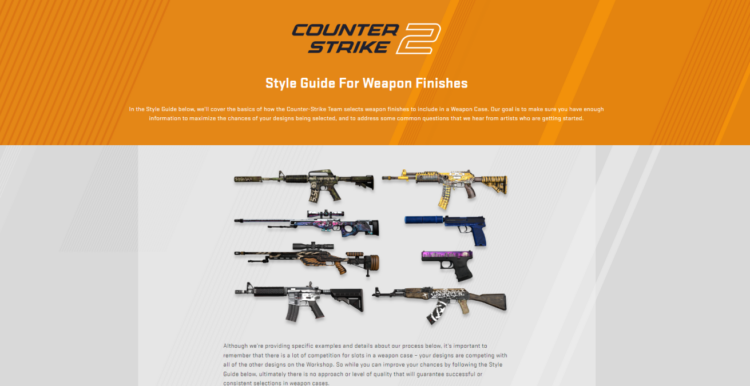
What restrictions does Valve have on trading skins?
Valve measures, regulates and control skin trading. They’ve been using a couple of basic principles for almost ten years. Although, these statements are aimed primarily at preventing fraud, they also affect all exchanges.
Valve’s key restrictions on skin trading:
- All transactions/exchanges go on hold. Valve has introduced a system in which transactions/exchanges involving users who have not passed two-factor authentication (2FA) are delayed for up to 15 days.
- Market restrictions. Skins purchased through Steam TP or received as a result of an exchange get a seven-day exchange ban.
- Legal actions. Valve use lawyers to shut down some skin-related sites. For example, betting sites, skin roulettes, etc.
Overall, Valve doesn’t change or introduce restrictions of skin trading often. Usually, it’s associated with law violations, as was the case with betting sites (previously, there were a lot of betting websites where you could’ve used skins as bets and Valve attacked most of them for the greater good). Another reason is also to fight scammers. Holding transactions for users who have not passed two-factor authentication reduces the risk of account hijacking.
Trading/exchanging skins in CS2 has many sides. CS2 skins are something in-between just simple cosmetics and a whole world of virtual economy (like NFT but actually working). While Valve plays a critical role in regulating the market, third-party exchange platforms like CS.MONEY provide new opportunities for traders.
In order to provide traders with the best skin trading experience, CS.MONEY offers a flexible filter system, a handy mobile application, low prices, cash withdrawal, and many other cool features. To get started, just log in using your Steam account. Start your trading career in two clicks!
By the way, you can easily buy any skins on CS.MONEY using cryptocurrency! You don’t have to open Steam, just go here: Buy Skins For Crypto. Every single skin, just find what you want and go for it!





